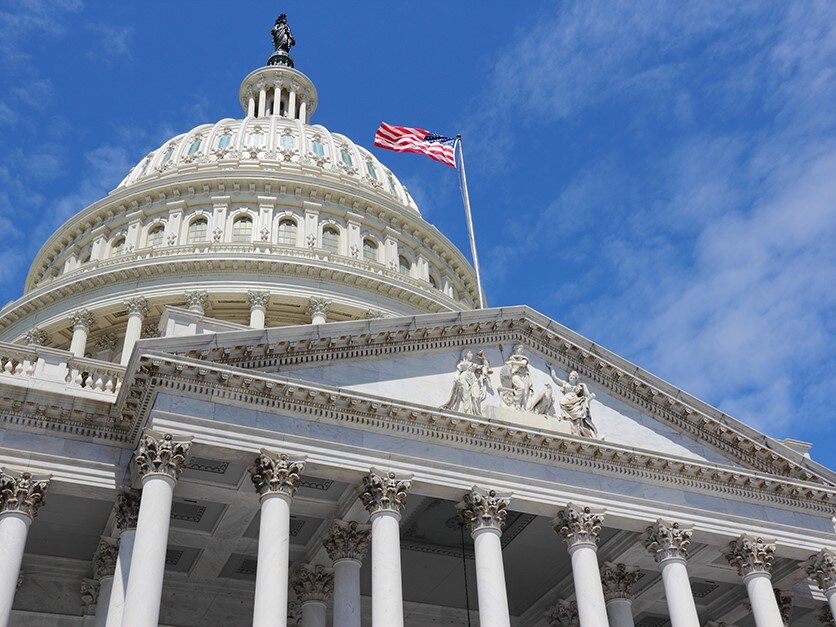Brazil is expected to harvest a record wheat crop of 9 million tons in 2022. Brazilian growers are...
2018 Farm Bill Extension Expires — What Does That Mean?

“The Farm Bill is kaput,” reported Food Safety News’ Dan Flynn.
“Congress has failed to extend or replace the 2018 Farm Bill by the September 30 deadline, meaning it has expired,” Flynn reported. “Officially known as the Agriculture Improvement Act of 2018, this is the most recent omnibus farm bill. It contained 12 titles. In November 2023, Congress enacted a one-year extension to 2024.”
“But that time has now run out. The nearly $900 billion bill is dead, but some of its spending will continue through the end of the year,” Flynn reported. “That means the current Congress has little time to work on the issue, or it will have to leave it to the new Congress that takes over in January.”
What programs are halted?
The American Farm Bureau’s Chief Economist Roger Cryan reported that “some programs will be shut down immediately, as their day-to-day authority depends on the farm bill.”
“Among those are:
- Numerous international programs, including the Market Access and Foreign Market Development Cooperator trade promotion programs and Food for Progress;
- The Biobased Markets Program and Bioenergy Program for Advanced Biofuels;
- Several important animal health programs;
- Programs for socially disadvantaged, veteran, young and beginning farmers;
- The Specialty Crops Block Grants program; and
- The National Organic Certification Cost-Share program.”
In addition, Agri-Pulse’s Sara Wyant reported that “the Conservation Reserve Program wasn’t extended to 2031, so its authority expired as well. The same is true for some small programs, including the Healthy Forest Restoration Program and Watershed Rehabilitation Program.”
“What else could be affected by the expiration of a farm bill? Programs that rely on mandatory funding authorizations in the farm bill are the most affected, according to CRS,” Wyant reported. “Those include programs in farm bill titles III (Trade), VII (Research), IX (Energy), X (Horticulture), and XI (Miscellaneous). These programs represent about 1% of mandatory funding in the farm bill. Without reauthorization or an extension, these programs either may not have authority to operate or may not continue to receive new budget authority. The 2023 extension provided authority and new mandatory funding for 19 of 21 small programs in the 2018 farm bill that did not have a budget baseline.”
What programs aren’t affected?
Cryan reported that “a number of current farm bill programs operate under permanent law, meaning law without a sunset date. The most important of these are crop insurance programs and the primary nutrition programs – the Supplemental Nutrition Assistance Program and The Emergency Food Assistance Program. Happily, these will continue to operate, although without the potential improvements and updates that would happen in a new farm bill. They both also adjust automatically to changes in price levels each year – and the crop insurance program has avenues for expansion to new agricultural products and new tools – so that they don’t need as much updating as the rest of the farm bill.”
Newsweek’s Aliss Higham reported, however, that “experts have now warned that having no renewed legislation in time for the new year could impact the funding of the Supplemental Nutrition Assistance Program (SNAP), which provides food benefits for low- and no-income families.”
“Several disaster programs are also permanently authorized, including the Livestock Indemnity Program; Livestock Forage Disaster Program; Emergency Assistance for Livestock, Honey Bee, and Farm-Raised Fish Program; and Tree Assistance Program,” Cryan reported.
What is the dairy cliff?
Wyant reported that “starting January 1 for dairy and with the end of the crop year for other commodities, price support programs revert back to how they were written in the 1940s (known as permanent law.)”
“Permanent law provides support based on a parity price from the 1910-1914 period that does not recognize productivity gains and technological advances in agriculture or modern marketing and policy approaches, according to USDA’s Economic Research Service,” said Wyant. “When a farm bill expires, the ensuing January 1 has been dubbed the ‘dairy cliff,’ because that’s when permanent law kicks in for that commodity, requiring USDA to begin taking steps to push up milk prices.”
What’s next for the farm bill?
Farm Policy News recently reported that lawmakers are pushing for a post-presidential election farm bill, with FERN’s Ag Insider reporting that “six of every 10 House Republicans signed a letter to Speaker Mike Johnson asking for a floor vote on the new farm bill during the lame-duck session of Congress, arguing that the legislation is a ‘must-pass item.’ The letter was released a day after House Democratic Leader Hakeem Jeffries listed the farm bill as one of his three top priorities for action after the November 5 general election.”
EDITOR’S TAKE:
If all of this discussion sounds foreign to you, it’s because the Farm Bill is very complicated unless you are familiar with the details of the legislation. The one thing to remember about this bill, the largest piece of funding is for food and nutrition programs, primarily food stamps or the Supplemental Nutrition Assistance Program or SNAP, as it is called today. If that funding or authority is threatened, the Farm Bill will receive immediate attention. Otherwise, additional one-year extensions are likely. Congress will not allow it to revert back to the so-called “permanent” legislation of the 1940’s either. Typically, the Farm Bill is a bi-partisan, urban-rural coalition effort. The new legislation, whenever it occurs, is not likely to change that tradition.
Speaking of tradition, be sure to let farmers/ranchers in your area know that section 179 of the IRS code, including rapid depreciation, is being phased out. They should take advantage of it now, before it expires completely.








